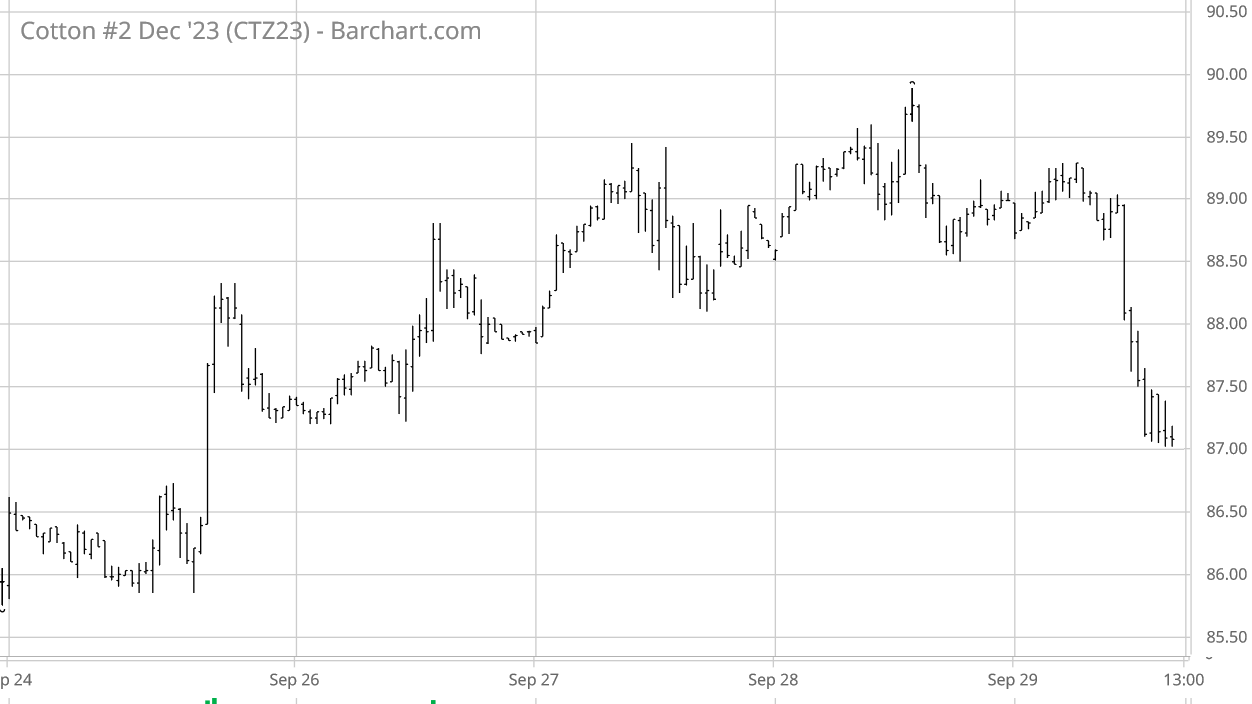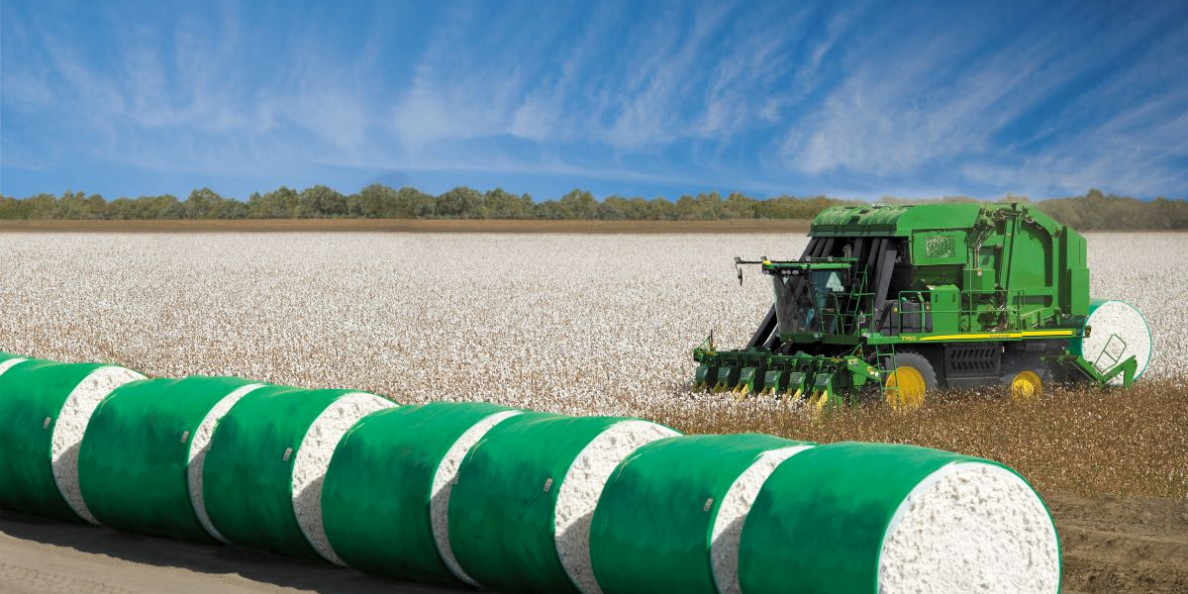For the week ending Friday, September 29, ICE cotton futures climbed steadily to weekly and monthly highs on Thursday before downshifting and sliding lower on Friday (see chart above courtesy of Barchart.com). The Dec’23 contract settled down 1.56 cents on Friday at 87.15 cents per pound. Since the Friday session represented 1) end of the month, 2) end of the quarter, while 3) going into a weekend, maybe the reversal was the confluence of profit taking and bad timing. Chinese cotton prices had a modest-but-steady climb across the week while the the A-Index of world cotton prices ended the week on a plateau.
Other agricultural futures markets were mixed. CBOT corn prices climbed steadily while CBOT soybean followed a sideways gyration. KC wheat futures traded sideways, downshifted at mid-week, and then resumed a lower sideways path. The U.S. dollar index peaked at mid-week, declined, and had a little bounce on Friday. Other macro influences (i.e., GDP, inflation, and interest rate policy) remain a potential headwind to longer term cotton demand.

Cotton-specific influences included speculation about likely shredding of zero’d out cotton stands — none of which should be surprising. The question is whether, and how much more abandonment is there beyond that expected by NASS and the market. Continued scattered showers over central and eastern Texas represent a shifting influence on the 2023 crop (i.e., from good to neutral to bad), as do the heavier accumulations over the western Delta and Atlantic seaboard. The latest Texas regional summaries highlight the effects rainfall over the last several weeks (click here and scroll past the feature article).
U.S. export sales through September 21 continued the relatively weak pattern since August. Actual export shipments were below the needed weekly average pace, but this is seasonally normal. USDA’s weekly summary of the U.S. regional markets continued to reflect mixed spot physical trading activity and very light to moderate demand, across the U.S. regions. Several other standard predictors of U.S. cotton demand are not encouraging, e.g., rising certified stocks and historically low levels of on-call sales.
ICE cotton futures open interest rose modestly across the week, while the pattern of price settlements through Thursday trended higher. This suggests some new long positioning earlier in the week. However, at least through Tuesday, the regular snapshot of speculative positioning showed a 826 fewer hedge fund longs, combined with 3,413 added hedge fund shorts, week over week. The net long index fund position increased by 1,274 compared to the previous Tuesday. So the speculative positioning reflected a mixed bag early in the week.
For more details and data on Old Crop and New Crop fundamentals, plus other near term influences, follow these links (or the drop-down menus above) to those sub-pages.
